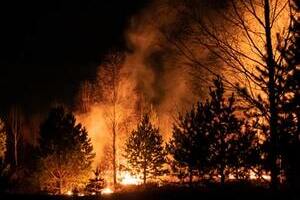Many cities on the U.S.’s West Coast recently endured the worst air quality in the world due to ongoing forest fires. In addition to the suffering from damage wreaked on homes and infrastructure, exposure to toxic particles produced by the fires can cause long term health problems for residents in the affected regions, especially in urban areas where air pollution is already a topic of concern.
Because wildfires spread so rapidly, it’s crucial for public safety officials and community leaders to have continuous access to environmental data so that they can update citizens in real time about the threats facing them, says Laurent Soubielle of Sigfox. Not only does information on air quality need to be obtained quickly for it to be relevant and actionable, but it also needs to be accurate so as to not add more confusion to already chaotic circumstances.
The IoT can help communities achieve these needs. By upgrading their air quality monitors to ones equipped with IoT sensors, communities can become smarter and safer by collecting timely data on the forest fires’ impact on air quality. Here’s how:
IoT sensors collect actionable insights into evolving conditions
IoT-enabled air quality monitors, like those created by eLichens, collect data that can then determine the effects certain factors (e.g., road traffic, emissions and other pollutants) can have on air quality. Once installed, these monitors survey and automatically communicate hourly concentrations of pollutants, including nitrogen dioxide (NO2), ozone (O3,) as well as other climate measurements such as temperature and humidity level.
The data collected from these monitors can then be used by to remotely map air quality in real-time for cities. Because air quality can vary greatly even from street to street, communities need to install multiple monitors to acutely recognise variances.
Otherwise, response plans risk being generalised and ineffective in addressing a given neighborhood’s immediate situation and needs. The platform uses big data and is able to predict the evolution of air quality based on the risk factors around like factories or even weather events like wind or fires nearby. The quality of the sensors allow to achieve this a small amount of sensors wisely deployed on the area.
While the ability to detect disturbances to air quality proves valuable for city planning under normal circumstances, it’s all the more important when communities are combatting wildfires, as these monitors can detect harmful air particles from the fires. With geo-specific insights into how both natural phenomena and day-to-day activities are impacting unique environments, city leaders can develop detailed action plans for how citizens in a given area should be responding to the unique conditions facing them. Without IoT sensors to alert operators to changes in these conditions as soon as they occur, communities might miss their opportunity to respond to risks while they are still manageable.
IoT-specific networks support continuous data transmission, even in extreme circumstances
IoT-enabled devices help city officials monitor evolving air quality in real time and use that data to protect the lives of their citizens. However, communities can only realise the value of these devices if the IoT sensors are connected to a network that’s both reliable and affordable, like 0G.

0G networks differ from traditional ones (e.g., cellular, Wi-Fi) in that they are optimised for the frequent transmission of small amounts of data over long ranges, meaning they can continuously intake and report changes in air quality. Because the information conveyed is small in volume, these networks use less power, and therefore run at a significantly lower cost than other network options.
Especially for communities already dedicating their resources to combating crises like wildfires, cost effectiveness matters. And whereas cellular or Wi-Fi networks are vulnerable to outages during extreme conditions like intense winds, as a radio frequency network, the 0G can ensure connectivity to provide the uninterrupted access to air quality data that communities need to respond quickly and effectively.
Air quality is a pressing concern for many communities within the United States, especially those on the West Coast currently fighting ongoing wildfires. By establishing an IoT-enabled monitoring infrastructure, communities can gain critical air quality insights that help them better navigate the current wildfire crisis, as well as prepare themselves for future air quality challenges.
The author is Laurent Soubielle of Sigfox.
Comment on this article below or via Twitter: @IoTNow_OR @jcIoTnow










